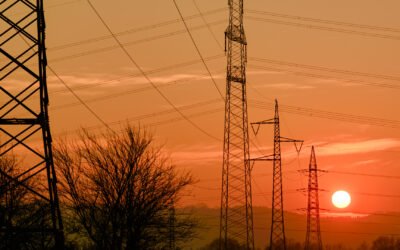Hydrogen FCEVs can be refueled within five minutes and have a range in excess of 350 miles which indicates that a modest quantity of hydrogen can go a long way. When it comes to environmental impact, hydrogen FCEVs are a much better option provided that the hydrogen fuel is produced from renewables, but green hydrogen is still expensive if compared with grey and blue hydrogen. Currently, efforts are being made across the globe, especially in the advanced economies, to bring down the cost of green hydrogen so that it competes with hydrogen produced from fossil fuels. It is significant note that the majority of the hydrogen produced in the world is produced from fossil fuels, but it is expected that in the future hydrogen production from renewables will become competitive.
Global FCEV Market Landscape
As per the estimates of Power Technology Research, there were beyond 50,000 FCEVs in the world by the end of 2021. Global FCEV market is lead by Asia where highest number of FCEVs are deployed on the roads. Within Asia, South Korea home country of Hyundai Nexo, and Japan, home country of Toyota Mirai are the biggest markets of hydrogen FCEVs. Asia is followed by North America, Europe and Australia. North America accounts for 24.50% of the global FCEV market, Europe accounts for 7.70% whereas Australia accounts for only 0.40%.

Figure 1: Number of hydrogen FCEVs by region in 2021.
Source: Power Technology Research
Global hydrogen refueling stations
As per the estimates of Power Technology Research, there were around 729 hydrogen refueling stations by the end of 2021. Asia leads the world in terms of the number of hydrogen refueling stations whereas with in Asia. Japan has 39%, China has 34% and South Korea has 26% of total hydrogen refueling stations in Asia. Asia is followed by Europe that account for 29.40% and North America which account for 10% of the global hydrogen refueling stations. Rest of the world accounts for only 1.10% of the global hydrogen refueling stations.

Figure 2: Hydrogen refueling stations by region.
Source: Power Technology Research
Policies Supporting Hydrogen Mobility
Recently, the European Parliament has voted in favor of the European Commission’s proposed Alternative Fuel Infrastructure Regulation (AFIR) which is a constituent of the ‘Fit for 55’ climate package. The regulation has set following targets (it is noteworthy that these are binding targets) for the deployment alternative fuels infrastructure which includes hydrogen as well:
1) Deployment of a hydrogen refueling station every 100 km on TEN-T core and comprehensive network with at least bar dispenser at each refueling station till 31st December 2027.
2) Deployment of a hydrogen dispenser after every 400 km.
3) At least one HRS per urban node (essentially means Europe would need to deploy at least 424 additional HRS)
4) Deployment of appropriate number of hydrogen and ammonia refueling points at TEN-T core maritime ports by 2025.
5) Work to roll out infrastructure for hydrogen powered planes at the airport.
On the other hand, the US has recently passed the Inflation Reduction Act in August 2022 which provides tax credits to hydrogen FCEVs and hydrogen refueling stations. Similarly, another advanced economy Canada has passed Alternative Fuels Act which terms hydrogen as an alternative fuel and plans to fast track the implementation of alternative fuels for motor vehicles.
Looking Ahead
In recent times we have observed heightened interest in the electrification of the transportation sector which in turn includes FCEVs as well. This shift in focus is largely driven by the global push towards addressing climate change by deploying environmentally friendly technologies. In 2017, it was observed that several countries proposed or passed laws that banned ICE vehicles which indicated a shift in policies especially in the advanced economies. Hydrogen on the other hand is seen as a missing piece of the puzzle which has the capacity to electrify hard to electrify sectors especially the transportation sector. Power Technology Research believes that that hydrogen FCEVs being a zero-emission technology (assuming green hydrogen is being used as a fuel) have the potential to complement other electric vehicle technologies which in turn would help economies across the globe in achieving net neutrality goals.
Hydrogen Service Overview
The research presented in this article is from PTR's Hydrogen service. For information about this service please submit a request shown below.
Contact Sales:
Europe
+49-89-12250950
Americas
+1 408-604-0522
Japan
+81-80-7808-1378
GCC/Rest of APAC
+971-58-1602441
More about our:
Hydrogen Market Research
Recent Insights
US Elections: Consequences of a Second Trump Presidency for Energy Sector
The US is making strides to move away from fossil fuels and eventually decarbonize the energy sector. The White House aims to achieve 80% renewable...
Sustainability Across Sectors: Highlights from GreenTech Festival 2024
Recently, I had the privilege to attend and present at the Greentech Festival, an excellent event in the realm of sustainability. This influential...
US and EU Strategies in Smart Buildings
Download Service Overview The EU and USA aim to decarbonize their building sectors to meet emission reduction targets. Initiatives like the Home...


